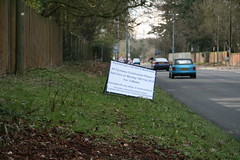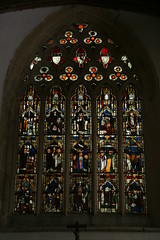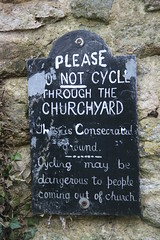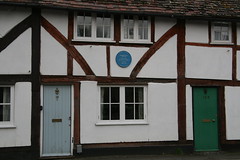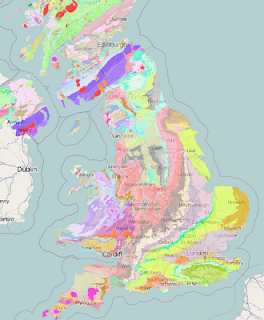When I was growing up in north-east England we were taught to recite the following ditty. The idea, I suppose, was to cure us of short northern vowels. For the full effect you have to pronounce the a's as though they are spelt "ar" ("
rarther farst" and "
parst")....
My father's car is a Jaguar
And pa drives rather fast
Castles, farms and draughty barns,
We go charging past
In retrospect it seems very odd. Nobody can have expected us to pass ourselves off as being posh, but perhaps the plan was that we could mix with the officer classes without causing embarrassment. It was never going to work, and thankfully society moved on anyway. We learned from the Beatles how to do a much better imitation of a Liverpool accent, and if there's anyone still around who talks like Celia Johnson or Trevor Howard then they are keeping their distance.
However, that little ditty, together with the schoolboy reading of the time left me with some very confused ideas about the south of England. I imagined that in the south boys my age all boarded at minor public schools, and understood the mysteries of cricket. Their little sisters rode ponies, their father (who they called pater) had a slightly shady job in the city, drank g&t at the golf club (before driving home in a Jaguar, rather fast), while their mother was having cucumber sandwiches with the vicar. They all lived in large mock-tudor mansions in villages full of little old ladies on bicycles who solved murders while spitfires flew overhead.
Inevitably, as time went on my knowledge of the world expanded, I met people from the south of England who didn't wear cravats, and who could drive in the snow. I discovered parts of southern England that weren't as I imagined, and eventually I sold my northern soul to the devil, and followed the job down here.
As a result I can now say that some of my best friends are southerners. Not many of them, of course. Most of my friends are lapsed northerners like myself, or expatriates from exotic and faraway places such as Scotland. The only southerner I know really well is from Essex, and that counts as East Anglia anyway. But lets not get bogged down in detail.
The important point is that I now know that Kent isn't like the southern England that I imagined, and neither is Sussex. Middlesex doesn't even exist any more - it turned into an airport. So all of my prejudices ended up concentrated on Surrey. I knew virtually nothing about it, so in my mind it was the last bastion of southern-ness.
And then along came my Jenkins quest, which forced me to visit the county, and threw my pre-conceptions into disarray. I've made a couple of trips on the bike to Surrey now, and discovered that the bastions are not as I imagined.
Perhaps there is really a heritage centre somewhere where all the minor public schools, jaguars, golfers, and ponies are still preserved, and people dress up in cravats and talk as though they are performing in a black-and-white film. But if such a place does exist I haven't discovered it yet. The parts of Surrey that I've visited are quite ordinary.
So unless anyone can point me in the right direction, this is by way of an apology to Surrey for years of imagining that it was weird. I'm sorry, and in future I'll try to be more sensible.

